Sushi is one of the most sought after dishes in the UK and it’s easy to see why – these little rolls are compact, filling and truly delicious. For anyone not in the know, sushi is a Japanese dish that consists of miniature rolls of rice wrapped in seaweed and filled with raw fish.
If you’ve ever wondered how you could go about making your own sushi at home, you’re not alone. Sushi rolls can be a great component of a homemade meal, or make for a nifty canapé at a house party.
In order to find out how to make sushi at home, we called in the experts. We spoke to Akinori Yasuda, who is the head sushi chef at fine-dining Japanese restaurant Yen in Covent Garden, to get the skinny on how to make sushi rolls at home.
What do you need to make sushi?
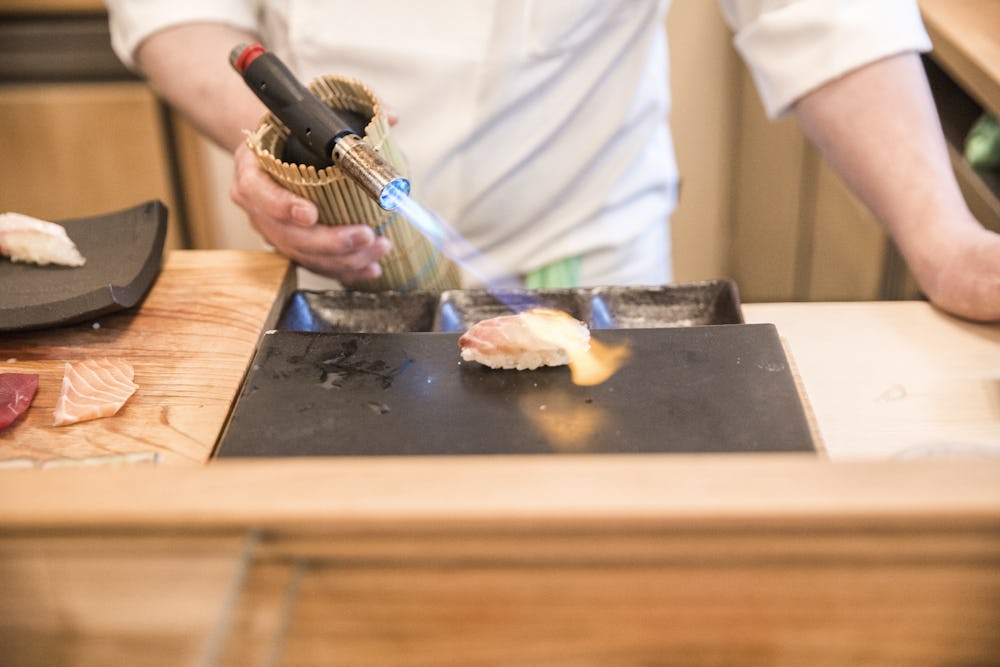
As with most things in life, making sushi is much easier if you have the right tools for the job. That doesn't mean you'll have to go out and buy a whole new kitchen's worth of equipment though, as you should already have plenty of these tools at home. Check out everything that you need to make sushi at home below.
Rice cooker
It’s hard to make good sushi rice in a saucepan, so if you’ve got the budget, we’d recommend investing in a rice cooker, which allows you to cook the rice without constantly watching and stirring.
Sushi-grade knives
It is very important to have a good, sharp knife for cutting your fish, vegetables and sushi rolls. Common knives used to make sushi include:
- A chef’s knife with a heavy, curved blade
- A fish knife that has a very sharp, long slim blade for slicing fish and cutting sushi rolls. The longer blade allows you to slice fish without running out of blade length, preventing a sawing motion which can smash or otherwise damage your fish and sushi rolls.
- A vegetable knife for fine and quick peeling, cutting and chopping
Rice rolling mat
A rice rolling mat is an essential part of the sushi-making process, and it’s wise to use plastic wrap too, to keep the rice from sticking to the mat.
Large bowl
For mixing and cutting sushi rice, preferably wooden.
Other bits
Rice paddle/wooden spoon (for “cutting” sushi rice)
Cutting board
Colander or bowl (for washing rice and vegetables)
What ingredients are used to make sushi?
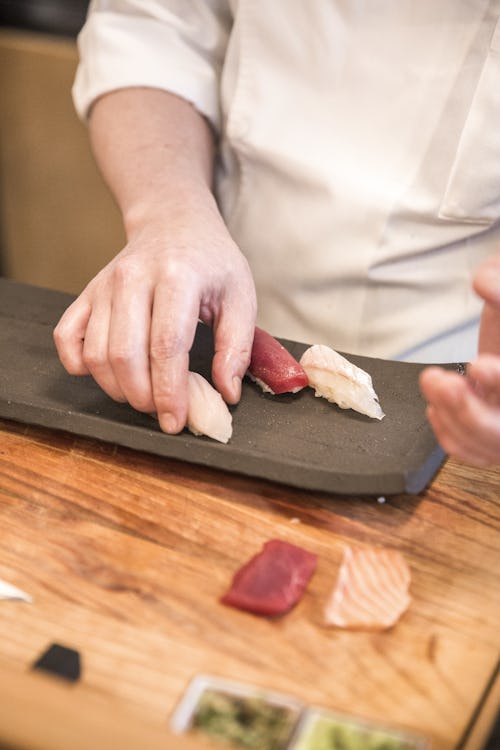
Aside from the obvious rice and fish, there are a few other ingredients that are essential to making good sushi. Many of these ingredients can be found in standard supermarkets, but it’s always worth popping in to Asian food stores in your local area too.
- Sushi rice
- Sushi-grade fish
- Nori seaweed wrap
- Wasabi Japanese horseradish (normally in powder or paste form)
- Mirin sweet rice wine
- Japanese rice wine
- Pickled ginger (usually served in the corner of a sushi tray to cleanse the palate)
- Soy sauce
What fish should you use for sushi?
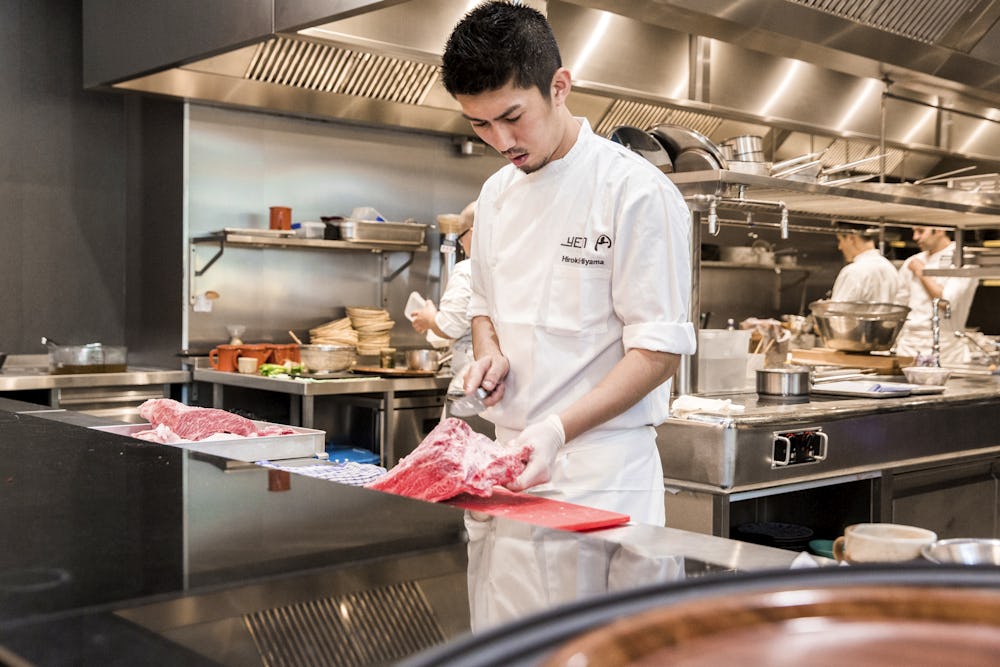
For great-tasting sushi, the most scrutiny should be given to your rice and fish. Sushi-grade fish is pricey but using the proper grade will ensure the best taste. Fish that’s used to make sushi should be smooth and firm to the touch, instead of feeling slimy. You should also purchase fillets instead of steaks, as they are a better shape for slicing sushi. Avoid smelly fish, as that indicates the fish is old, and make sure the fish you pick is bright – dull or brown fish means it is beginning to oxidize, so that's something to avoid.
How to make sushi rice
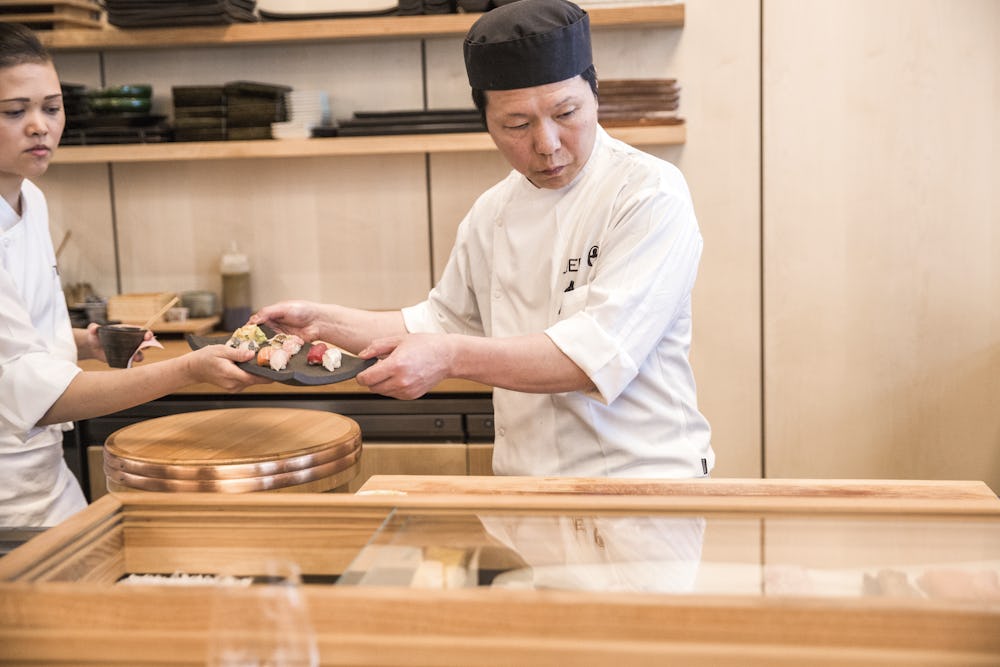
You should only use short-grained sushi rice. It’s starchy and absorbent, which makes it sticky. Jasmine, Basmati or other long-grained varieties aren’t suitably absorbent and are too dry and hard.
Look for ‘sushi rice’ on the label of rice packaging, or visit a local Asian supermarket for a good selection. Well-known brands include Kokuho Rose, Nashiki, and Koshihikari.
Sushi rice must be washed with cold water prior to cooking to remove any bran compounds or powder. As you agitate the rice, the water will turn cloudy. Rinse until water is clear. If you fail to do this, your rice may be too sticky.
Sushi rice recipe
This makes enough rice to make sushi rolls for a group of four people.
Ingredients:
3 cups sushi rice
3 ¼ cups water
1/3 cup rice vinegar
3 tbsp sugar
Method:
- Add the sushi rice and water to the rice maker and set the time to begin cooking. If you don't have a rice cooker you can cook the rice in a pan. Bring to the boil first, then cover and simmer for 6-8mins
- When rice is done cooking, prepare the sushi rice vinegar mix. This is what gives sushi rice its distinctive taste
- Place rice vinegar and sugar into a small sauce pan. Over a low heat, mix until the sugar dissolves
- Let the mixture cool
- While the rice is still hot, move it to a large wooden bowl
- Take vinegar mixture and sprinkle it lightly in small amounts over the rice, making horizontal and then vertical cutting motions across the rice
- If you like, use a small hand-held fan or piece of newspaper to fan the rice as it cools When all of the vinegar mixture is cut into the rice, the rice should be sticky and shiny, and slightly cooled – not hot or cold (if your rice is too hot when assembling your sushi, it will become rubbery on the nori)
How to cut fish for sushi

Once you’ve prepared your sushi rice, the next stage is to cut your fish, ready to use it as a filling for the sushi roll. But how should you cut the fish? Check out the different techniques below and see which cuts work for different types of sushi.
- A rectangular cut is most common and is usable on all fish. Hold the fish on the bias and start with the heel of the knife
- An angled cut is often used for nigiri
- A paper-thin cut can suit some firm, white fish
- A cube cut can work for soft thick fish
- A thread-cut is often used for squid and thin white fish filets
How to make sushi rolls
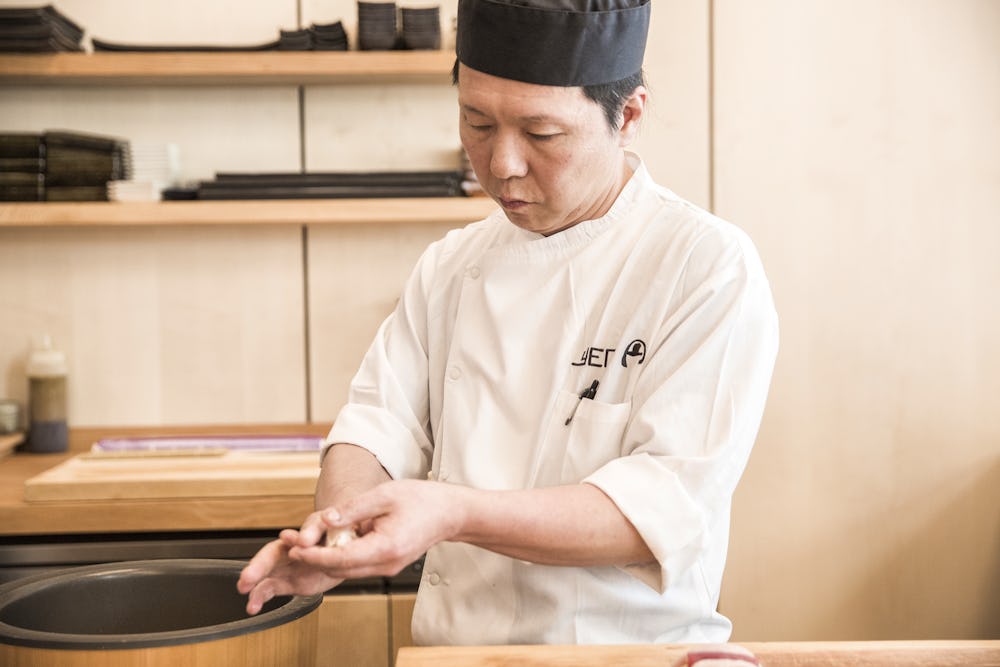
Now that your rice and fish are ready to go, it’s time to start assembling your sushi rolls. This is the most fiddly part of making sushi, but Yen has got you covered with a few top tips and tricks.
Method:
- Place 8 ounces of water and 2-3 tablespoons of vinegar in a bowl so you can dip your hands when assembling your sushi. This will keep the rice from sticking to your hands, which is one of the biggest obstacles first-time sushi makers can come across
- Cover your bamboo mat with plastic wrap to prevent rice from sticking to it
- Position a half sheet of nori (shiny side down) on your covered bamboo mat
- Dip your hands in the vinegar water mixture to prevent sticking
- Grab a small handful of sushi rice. Cover bottom three-quarters of nori sheet with thin layer of rice, leaving the top quarter of the nori sheet empty – it is this empty section that will seal the roll together
- Make a groove along the length of the rice
- Add a small swipe of wasabi on top of other ingredients if you prefer, then add thin strips of your chosen filling (fish or vegetables)
- Begin rolling your sushi roll by putting the tips of the four fingers of each hand on top of sushi ingredients to hold them in place while keeping both thumbs on the back of the bamboo rolling mat closest to you
- Push the mat forward until the mat is completely around the sushi roll and until the top and bottom edges of the nori meet
- Pull your four fingers out from the mat and roll
- Continue to roll the sushi mat in a circle around the ingredients. Avoid pressing too hard. The mat can be used to shape your sushi into a nice long, round roll, but be gentle or you’ll have a heavy rice log
- Set your first sushi roll on a plate and then repeat the process, making as many additional rolls as you like
- Using a very sharp knife, gently cut each sushi roll in half, cutting down and through. Place the two halves above and below each other, and cut each section into three pieces, leaving six bite-sized sushi morsels
- Repeat until all your sushi rolls are cut into bite-sized pieces
How to eat sushi
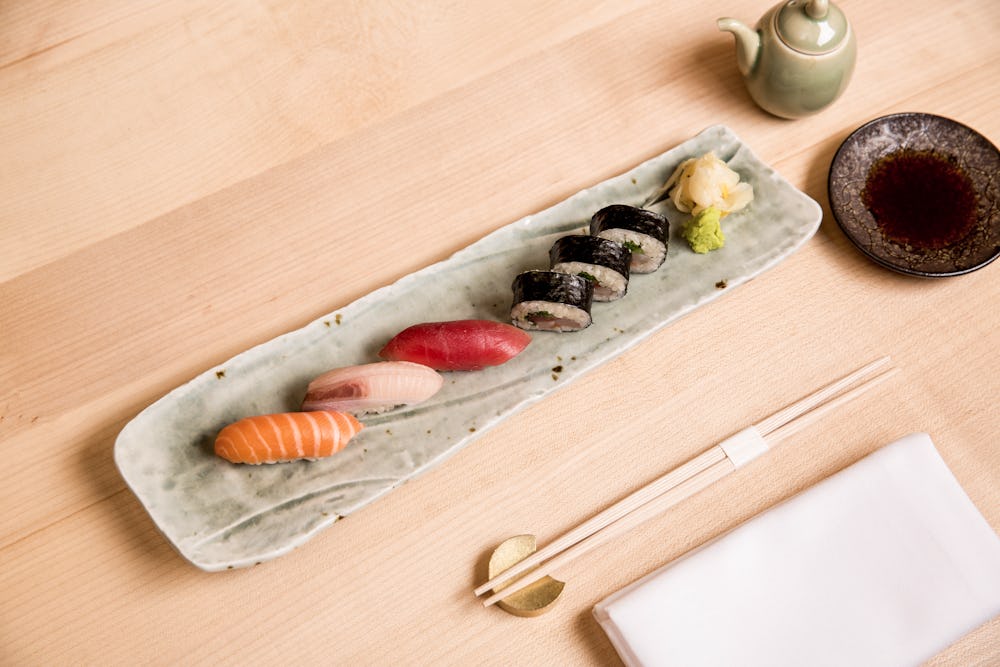
When it comes to consuming your sushi, you should ideally use chopsticks, but you can use your fingers too! Bite-sized sushi should be eaten in one go to make sure you get the full effect of the flavours. If you like to dip your sushi in soy sauce, do so sparingly because too much soy will cause the rice to fall apart.
If you’d rather leave it to the professionals, peruse our pick of the best sushi restaurants in London.